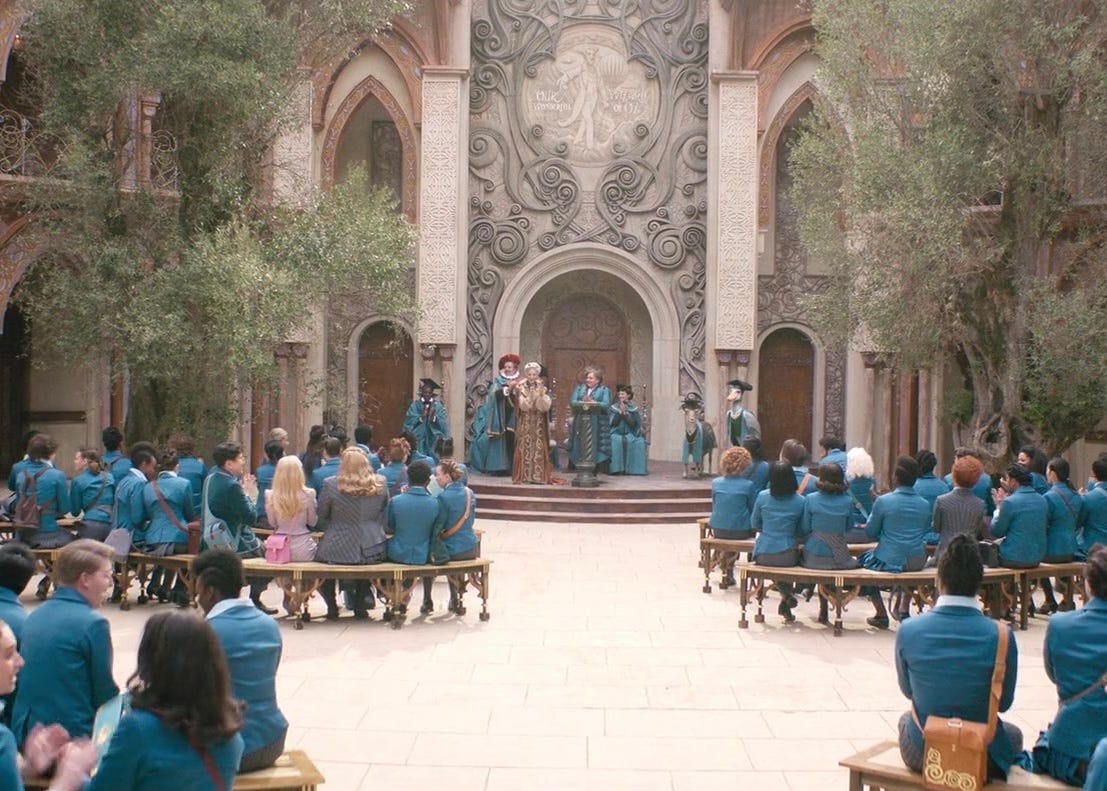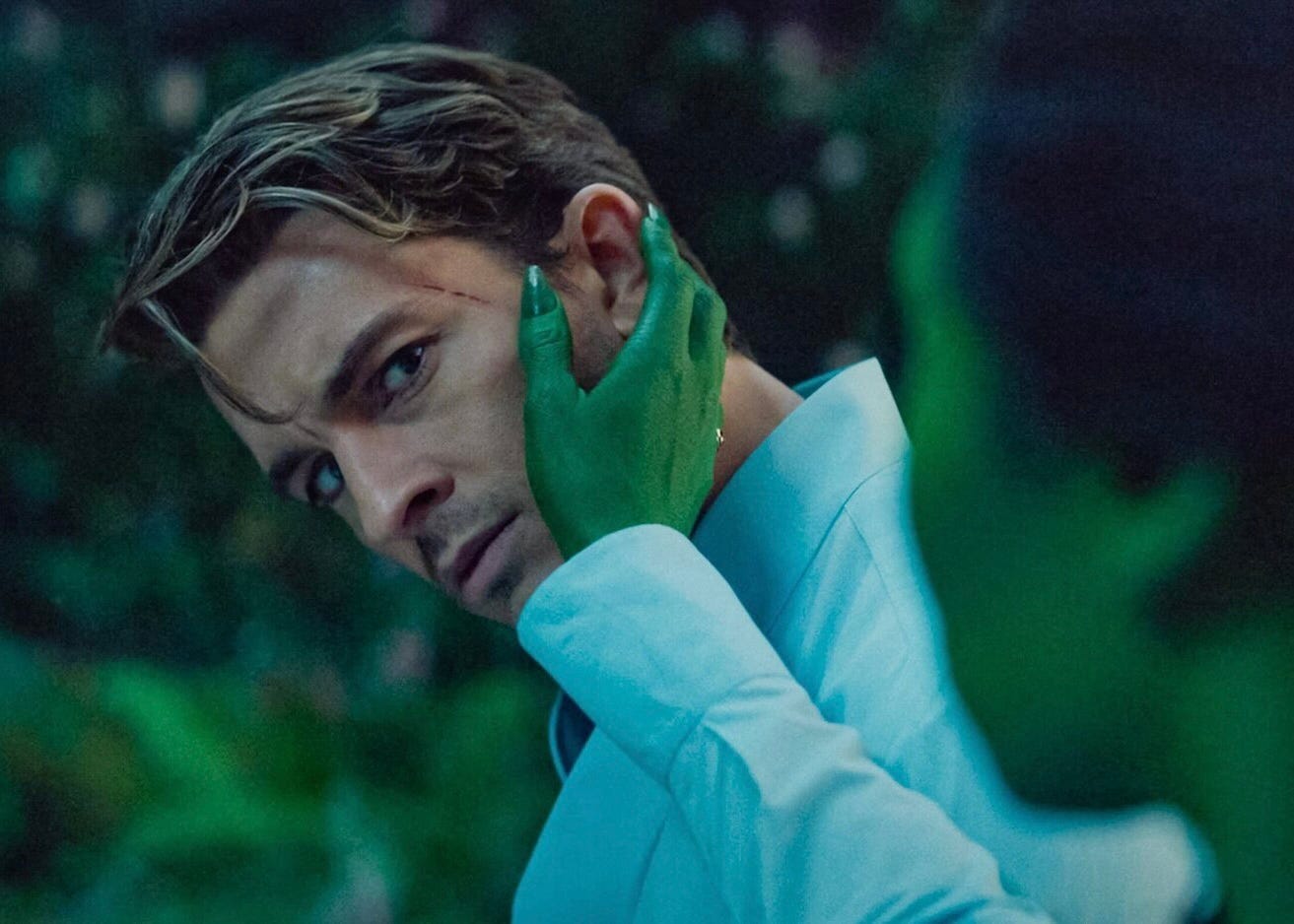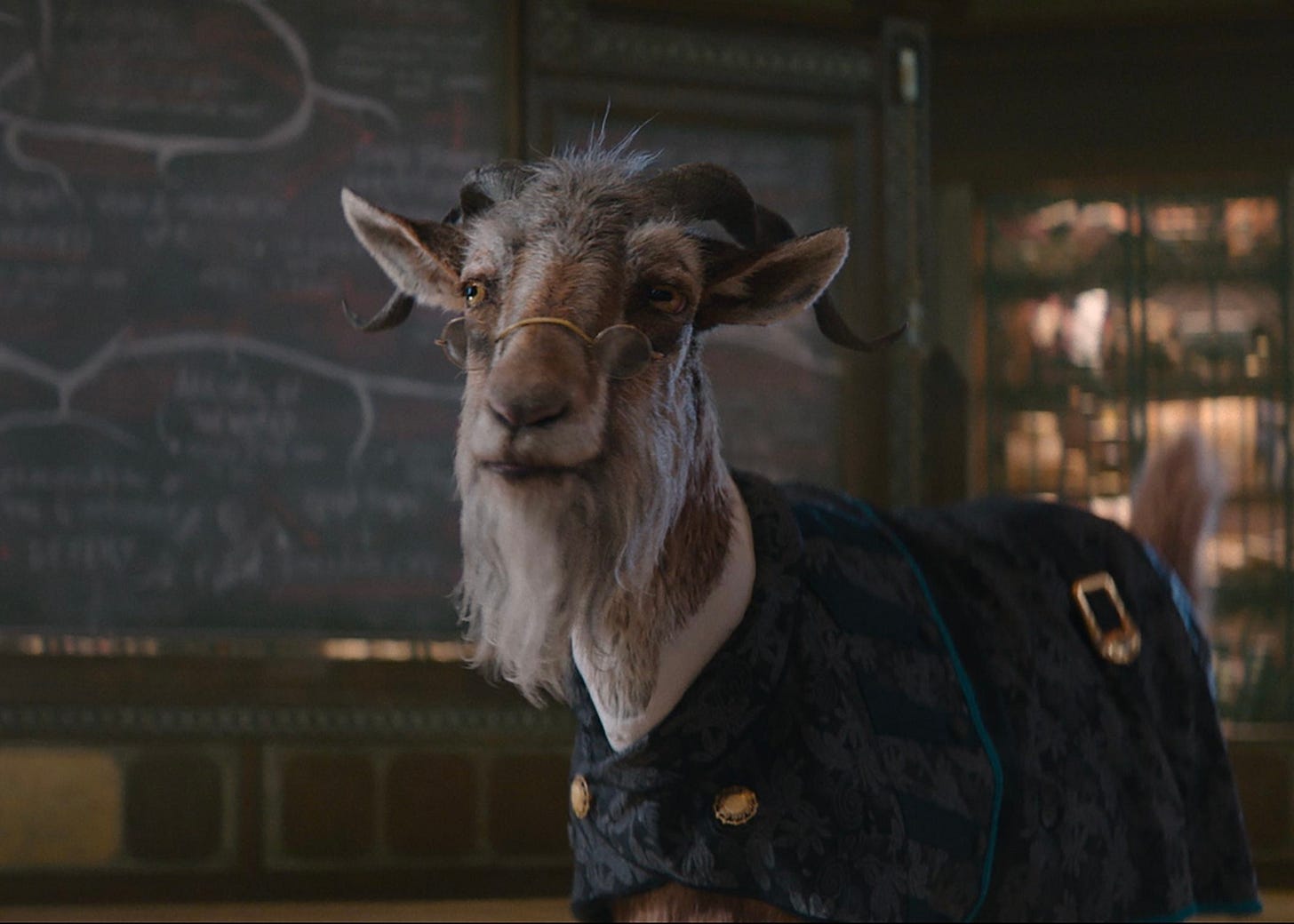'Wicked' review: a dream deffered
Honoring the source material beyond uneven pacing and muted color palettes.
The first installment of the movie adaptation of the Broadway musical had abnormally high expectations to meet. The origin story of the Wicked Witch of the West, inherently linked to the cult classic film The Wizard of Oz and its reputation as one of the most fantastical and vibrantly colored pictures of all time, started off on a bad note once the first promotional stills were released, given the lack of saturation in its coloring. This was posteriorly confirmed to be the case for most of the movie, a technical concern particularly relevant for a film linked to the much celebrated, though now non-existent, technicolor technology used in the original.
The missing vibrancy which is perpetually linked to the story of Oz, is hardly disregardable in the adaptation. The disappointing coloring, especially noticeable in scenes taking place at the University of Shiz, is not as perceptible of an issue in most scenes taking place during nighttime, where the higher contrast resulted in more significant, though still not exceptional, saturation than in its daytime counterparts. The underwhelming coloring is aggravated in the costume design choices made for the character of Glinda, given the pale shades of pink Ariana Grande was dressed in which further washed out her already light skin and hair, and could have been avoided through more pigmented pieces such as the one used for her ball dress.
Vocally, the musical sequences are expertly performed by the lead and supporting actresses, though the odd directorial choices made in the shooting of the larger numbers often did a disservice to both choreographies, not allowing for a full scope of their magnitude, and set design achievements, whose restricted visibility often enhanced their limited scale. As a result of this, the real life size of the sets built was not fully translated into the film.
As Elphaba’s origin story, the amount of screentime between the protagonist and Glinda amounted to a similar total, comprehensively since their relationship is a focal point of the narrative. Despite this, and given the lead’s inherently more reserved character, attributing her an equivalent amount of screentime as Glinda, whose personality is much louder in comparison, leaves the protagonist feeling underwhelming at times. Elphaba’s character arc, with a large focus on her powers, is furthermore partly misused on the over-establishment of the connection between her magic and her emotions, a fact which was enunciated in a substantial series of events. The development of her relationship with Glinda is graciously attained, but it is Elphaba’s connection with Fiyero that is most refreshing, as the prince exudes an uncommonly clever charm for its world, challenging the witch’s own smarts.
The Wizard of Oz is famously known for its political thematics, covering bigotry as well as propaganda and censorship, and other heavy subject matters. Musicals, although popular for their theatrics and inherently less serious approaches to commentaries, being that the concept of one bursting into a song in the midst of difficult conversations is naturally strange, have been attempted as well as successfully achieved as a means through which to present heavier subject matters. This genre, whilst not inherently taking away from any discussionary value it might hold, must be handled with additional attentiveness not to sacrifice its overall narrative and social criticism in favor of “fun”.
In Wicked, the balance between serious scenes exploring the themes of the story, and musical sequences related to life at Shiz, is disproportionate and does a disfavor to the source material, though this might be compensated for in the second installment, and which could have been less noticeable had the film’s runtime been shorter. Despite this, the issue of the rising bigotry against animals is heightened through both obvious and more subtle scenes and shots “humanizing” them by exposing their pain as they are exploited by Oz’s society. The transition between these more sombre sequences back to the overall lighthearted tone of the film, were mostly gracefully accomplished, mostly followed by less heavier moments of self-exploration for Elphaba instead of abruptly returning to eccentric choreographies.
Wicked establishes the world of its story, and lays ground for both characters and dynamics alike to be further explored in the sequel. Given the fact that both pictures were filmed simultaneously, it would be curious to see how they might diverge in faults considering the fact that only so many alterations will be capable of being made post further analysis of audiences’ reactions. Regardless of this, the project seemingly accomplished the aspect it found most important, to honor the original musical, indulging old fans whilst enchanting and bringing in new ones.
☆ thank you for reading ☆







